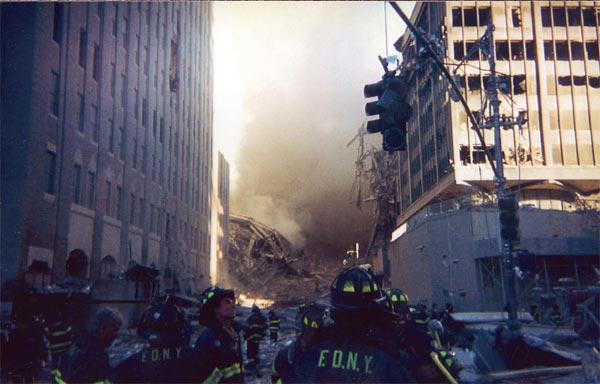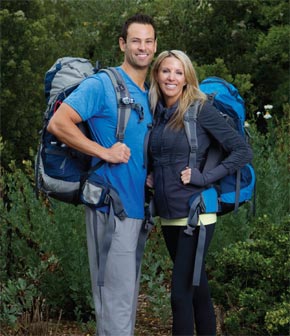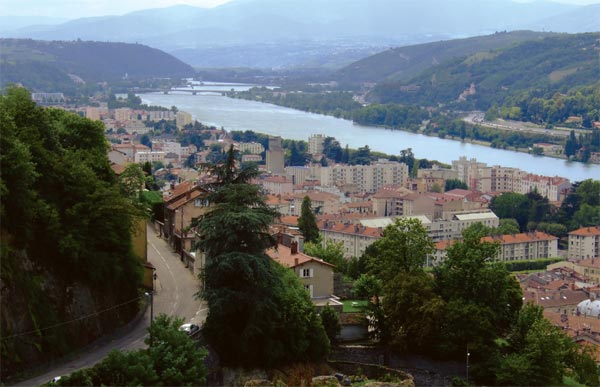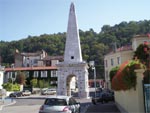When it was learned that New York City First Responders were not invited to the 10th Anniversary Memorial Ceremonies at the World Trade Center, many people were surprised. Their exclusion opened old wounds for those Ground Zero rescuers—the forgotten witnesses.
One such firefighter was Sean Francis Hickey, one of the first on the scene. Hickey, a retired FDNY Ladder 144 Firefighter, now lives in California. In a recent exclusive interview, Hickey recalled his personal experience with the event that would forever change our world.
“I awoke on my first day of vacation in Bayside, New York City and took an early morning stretch. I said, ‘What a beautiful day.’ My brother Bert called and told me we were attacked. Attacked! I turned on the TV and saw the smoldering building—the first one hit. I said, ‘goodbye,’ and ‘I love you.’ to my wife and children, but when I said goodbye to my firefighter brother, it was another thing altogether. I knew it could be the last day for both of us. My brother was trained in terrorism fire tactics. He knew the possibility of biological and chemical devices, and knew there could be much more than just fires. I rushed to my fire house in Queens, and was told to drive to Shea Stadium to be bused to the World Trade Center. I was in a bus with eight guys with a police escort to 11th Avenue, ten to twelve blocks to Westside Highway.”
Hickey then turned the inside of his left arm, showing how he identified himself in case of the worst. “I took some photos of the guys on the bus, and then with a marker pen, wrote my name ‘Hickey’ on my arm. When the lieutenant heard the guys laughing, he told them to do the same. We all knew we may die that day.”
When Hickey’s group arrived at the World Financial Center, they entered the WFC3 to get to the Command Center where Chief of Department Commissioner William Feehan had set up under the catwalk between the Twin Towers on Westside Highway. “By the time we started the search both buildings were down. Street sidewalks were makeshift morgues,” said Hickey. Their mission was to find Feehan. Sean Hickey knew the 71-year old Chief—he was a neighbor and had been with the department over forty years. When they entered the building, Chief Tori told Hickey to stay within shouting distance because they knew the city-issued handy-talkie radios did not work at close range.
The group of nine firefighters, on a mission to find Feehan, passed through steel doors and descended four stories down the stairs to the garage, feeling for each step in the pitch dark. Water from broken sprinkler systems and main pipes was flooding the basement. There was a real fear that the water could be electrically charged from exposed wires. The firemen had no respirators or radios, but were protected in knee-high rubber boots. In higher water they could be electrocuted. Hickey, thinking the water was only ankle-deep, stepped off the five-foot high loading dock into waist-high water. Fortunately, the water was not electrically charged. Others followed.
As they waded through the pitch-dark garage, Hickey discovered the bodies of fallen comrades—dead firefighters. “I stood there, just me and God,” Hickey remembered. The other firefighters followed Hickey’s flashlight and waded towards him. They climbed over piles of smoking twisted metal and debris, once a towering building. “Sean, we were the first ones out,” a firefighter friend, Mark Klinger, later told him.
Hickey knew so many others who perished that awful day. “Father Mychal Judge was among the first to die, one of the first brought out—the chaplain was my friend. Chiefs Bill Feehan and Peter Ganci had also died when the 110-story South Tower fell.”
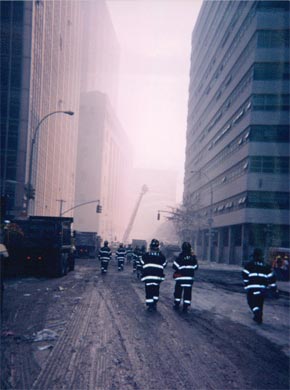
“A HERO IS A SANDWICH”Some historical accounts have been sanitized, stressing healing, hope and forgiveness. Journalists were given tips on “9-11 Healing and Remembrance Programs,” being told to mitigate eye-witness accounts; to not state the number of dead, thus whitewashing much of the truth by avoiding graphic images.
Sean Hickey showed me Ground Zero photos. They are not “media” images, but what was seen through the eyes of a firefighter who was there. “The other firefighters who had beaten us to the Twin Towers were already dead; our group in the garage miraculously survived. We got out of the building and climbed over the hot smoking rubble, thirty feet high, strewn with the dead, pieces of people. Nothing was recognizable. It was a field of grey dust, ash and smoldering debris—surreal, like being on the moon. I was overwhelmed. I got on my knees and prayed for all those who had died.”
For the rest of the day, seventeen straight hours, the only people Sean and his team found were dead firemen—many crushed under the rigs they drove when the towers came down. The rescue team found no one to rescue. They carried buckets roaming over the site, finding dismembered body parts. Hickey was close friends with twenty-seven firefighter brothers who died that day. They were friends from Queens and The Bronx—none of them were ever found.
He and his rescue team came upon Fire Department bunker gear under a crushed truck telling him it belonged to a Fire Captain. He decided not to read the name on the captain’s bunker coat when he saw the man’s condition. He did not want to know the name of the broken man that will haunt his memory. Hickey pulled the body from under the heavy steel beams and with the help of other rescuers, passed the captain’s body from one to another, as respectfully as they could under the circumstances, to carry the body out of the area. One rescuer became physically sick—the only normalcy of the day. Every firefighter brother carried from Ground Zero adds to the loss, pain and collective memory of endless, exhausting hours.
Even though the nerve jacket was torn from Hickey’s shoulder, he slammed the bone back into place and continued the rescue—spurred on by pure adrenalin. The firefighters breathed in the towers’ toxic fumes, dust and residue of airborne poisons. As they breathed in the noxious mixture, their throats and lungs burned and their dry mouths became filled with grey, flying ash.
When the firefighter rescuers finally got to drink water, all the poisons were swallowed. “It was impossible not to inhale the debris with every breath,” explained Hickey, “everything I saw was coated with layers of fine dust which was all that was left of the towers and everything in it; pulverized remains of buildings, furniture…people. The dust was so thick, we could not see very well and had to pick our way blindly through everything to search for survivors.”
Through the eeriness of a grey field of death, a surreal vision interrupted Hickey as he searched the rubble. “The only contact with a living civilian that day was a Middle Eastern shopkeeper, dressed in typical robe and head garb; he was crying and carrying water to survivors—there were none…”
I told Sean Hickey that he is a hero, to which he laughed and replied, “A hero is a sandwich,” as he broke the somberness of the moment with typical Irish humor.
AFTERMATH
Sean Hickey was forced into early retirement. Today, at only fifty, he is divorced and disabled. His right arm jerked from the shoulder socket at Ground Zero is atrophying; diagnosed as Complex Regional Pain Syndrome and the spine casing is stripped. His lungs have multiple tumors; tissue samples show deposits of carcinogens—benzene, glass, fiberglass, lead, insulation, Freon, asbestos and human remains. Doctors have said many First Responders have “lungs like fish tanks,” lined with glass. Hickey said that a high percentage of the 9/11 responders are divorced. Large numbers have either committed or attempted suicide. Many, given legal drugs, are now hooked. Hickey recounted how life became so difficult, that at one point he tried to end his life. My heart broke that a vital young man would have to endure so much. And there are many more Sean Hickey backstories; hopefully they end as well.

When he received the “settlement,” being a stubborn, Bronx-born proud Irishman and not wanting to profit from 9/11, Hickey paid all his family’s bills, paid off his children’s college tuition and gave a brand-new Lexus to a young stranger who lost his legs in a roadside bomb blast in Iraq.
Sean Hickey has designed his own therapy program; he builds shadowboxes—each one a unique work of art using bits of steel and found objects from the North Tower, things significant from that long day in the pit. He welds firefighter figures, like old-fashioned toy soldiers, and places them in the framed diorama, as if telling a story on a small stage. “I put my emotions into my art. Art is my therapy. I never sell my shadowbox creations, I donate them. Four of my art pieces are exhibited at FDNY HQ at 9 Metrotech in Brooklyn. One contains the medal I received from New York City for being one of the first rescuers at the scene. Each art piece I create peels away another layer of grief—I have many more to make…”
Sean Hickey, badge number 2886, FDNY, does not sign his works of art, per se. He places a thumbprint of blood somewhere in the shadow-box; his signature to be inside forever. It is Hickey’s reminder that he collected the DNA of so many people at Ground Zero. It was all he could collect. There was nothing else left.
